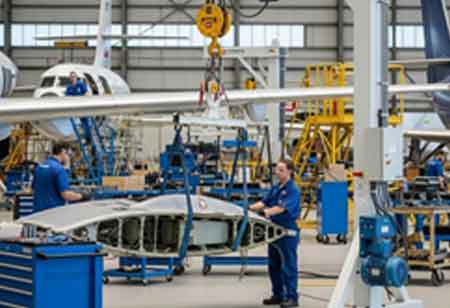The escalating danger of wildfires in the UK, driven by changing climatic conditions and evolving land use patterns, has underscored the critical need for advanced prevention strategies. In this context, space technology is emerging as an indispensable tool, offering a suite of capabilities that transcend traditional ground-based approaches. From wide-area surveillance to precise environmental monitoring, satellite-based systems are transforming how the UK approaches wildfire prevention, providing crucial data and insights for proactive management across its diverse landscapes, from rural moorlands to urban-adjacent wild spaces.
Early Detection and Risk Mapping
At the forefront of this space-enabled prevention effort is the pervasive use of Earth observation satellites. These orbiting platforms are equipped with a variety of sensors capable of collecting vast amounts of data across different spectral bands. Thermal infrared sensors, for instance, are particularly vital as they can detect subtle heat anomalies on the ground, even before a fire becomes visible to the human eye or generates significant smoke. This early detection capability is paramount for rapid intervention, allowing emergency services to respond to nascent ignition points before they escalate into uncontrollable blazes. The ability of these sensors to penetrate smoke and operate effectively day and night further enhances their utility, overcoming limitations inherent in conventional aerial or ground-based observation methods. This continuous vigilance from orbit provides an unprecedented level of real-time awareness over vast and often remote areas, significantly reducing response times.
Beyond immediate fire detection, satellite imagery plays a crucial role in comprehensive risk assessment and mapping. High-resolution optical and radar imagery provides detailed information on vegetation types, density, and moisture content, all critical factors influencing fire behaviour. By analysing changes in these parameters over time, scientists and land managers can identify areas with elevated fuel loads or drought-stressed vegetation, pinpointing regions at higher risk of ignition and rapid fire spread. This geospatial intelligence enables the creation of dynamic fire risk maps, informing strategic land management decisions such as targeted prescribed burning, fuel break establishment, and community preparedness planning. The continuous, wide-area coverage offered by satellites ensures that even remote or inaccessible areas are consistently monitored, providing a holistic view of the landscape's vulnerability to fire. This proactive mapping empowers authorities to allocate resources more efficiently and implement preventative measures in high-risk zones.
Predictive Power: AI and Data Analytics from Space
The integration of satellite data with advanced analytical techniques, particularly artificial intelligence (AI) and machine learning (ML), is significantly enhancing predictive capabilities. AI algorithms can process immense datasets from multiple satellite sources, combining them with meteorological data, topographical information, and historical fire patterns. For instance, AI can analyse the relationship between certain weather conditions and the likelihood of a fire starting or spreading. This sophisticated analysis allows for the development of predictive models that forecast fire danger levels with increasing accuracy. These models can identify specific windows of high risk, enabling authorities to issue timely warnings, allocate resources effectively, and implement preventive measures in anticipation of hazardous conditions. The ability to predict potential fire ignition and spread pathways enables a more proactive and preemptive approach to wildfire management, allowing for the strategic deployment of firefighting assets and public safety advisories before a fire even starts.
Space technology facilitates enhanced situational awareness even before a fire ignites. Satellite-derived data contributes to a deeper understanding of environmental conditions that predispose areas to wildfires. This includes monitoring long-term trends in drought severity, changes in land cover due to agricultural practices or urban expansion, and the impact of climate change on vegetation health. For instance, satellite data can be used to monitor changes in vegetation health due to climate change, which can indicate areas at higher risk of fire. Such information supports the development of robust, long-term prevention strategies, moving beyond reactive responses to a more holistic approach of building fire-resilient landscapes and communities. The consistency and objectivity of satellite data provide a reliable foundation for these critical long-term assessments, helping policymakers and land managers to make informed decisions for sustainable land stewardship.
Enhanced Monitoring and Communication Networks
The advancements in satellite constellations, including those in Low Earth Orbit (LEO) and geostationary orbits, are leading to more frequent revisit times and higher spatial resolutions. This means a continuous stream of up-to-date imagery, enabling near real-time monitoring of vast areas. This enhanced temporal and spatial resolution is particularly beneficial for the UK's diverse landscapes, which can experience rapidly changing conditions, ranging from dry heathlands to dense woodlands. The ability to quickly observe changes in vegetation or detect early heat signatures allows for prompt action, often before a small ignition becomes a significant incident. The increasing number of satellites in orbit, coupled with technological advancements, ensures a comprehensive and persistent monitoring of the UK's natural assets.
Satellite communication systems play a crucial role in ensuring that critical data reaches its intended stakeholders rapidly and reliably. In areas with limited terrestrial communication infrastructure, satellite broadband and data relay services provide a resilient backbone for transmitting Earth observation data, risk assessments, and early warning alerts to remote operational centres and field teams. This connectivity is crucial for maintaining a seamless flow of information, enabling coordinated responses and effective decision-making across different agencies involved in wildfire prevention and management. For example, during a large-scale incident, satellite communication can ensure that all relevant agencies are aware of the situation and can coordinate their response. The reliability of satellite communications means that vital information can be exchanged even during large-scale incidents where conventional networks might be compromised.
Space technology is transforming wildfire prevention in the UK from a reactive endeavour to a highly sophisticated and predictive science. Through continuous Earth observation, advanced data analytics, and the integration of diverse information streams, satellite systems provide an unparalleled vantage point for understanding, anticipating, and mitigating wildfire risks. This strategic use of space-based capabilities is crucial to safeguarding the nation's natural environment, vital infrastructure, and the well-being of its communities against the growing threat of wildfires. The ongoing evolution of space technology promises even more refined and comprehensive tools for the future, further bolstering the UK's resilience against these destructive events.









